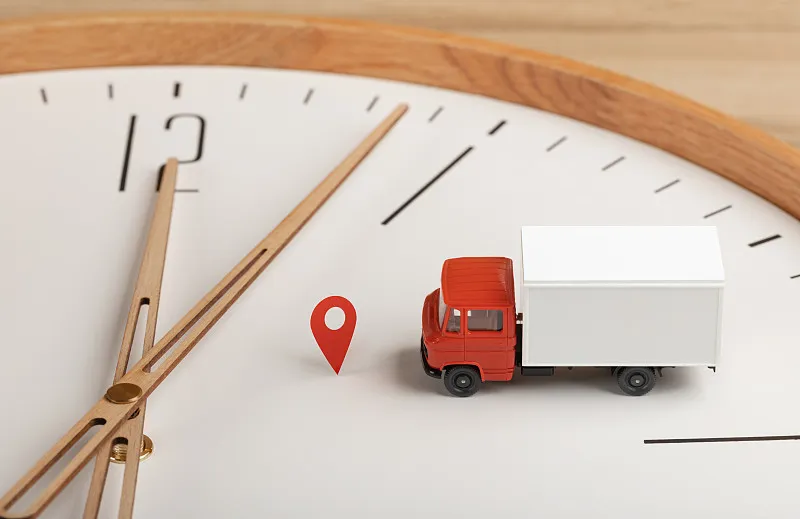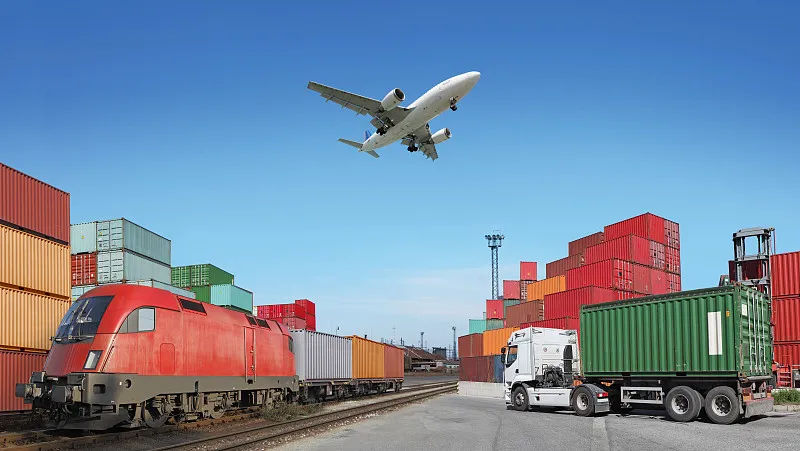Electronic commerce in Australia has recorded significant growth in the last few years due to increase in level of online shopping, use of mobile devices, and developments in technologies in internet. The digital retail industry has grown in the recent past and taken a different market share in the Australian market as more people prefer the comfort of purchasing from home. This has been further propelled by increased connectiveness and more so by the availability of smart mobile phones that have greatly provided easier access to many products and services. The Australian e-commerce environment is still fluid and becoming continuously more saturated with competition from advanced technologies.
The decision to extend your business to Australia has its advantages, mainly because Australia is situated in a rather isolated part of the globe. Buying and transporting goods to Australia requires several expenses as listed below; Import taxes are some of the expensive incidences to encounter when importing goods for sales in Australia.
This apart from the price of the products and cost of transporting the products there are also import taxes. These various import duties and tax regulations are positioned by the Australian Border Force (ABF). If taxes are not paid or if there’s an attempt to avoid them, the ABF has the mandate to confiscate and bail the goods. But in serious cases of tax evasion, the ABF has powers to impose huge penalties or it can even charge a persons to court.
Moreover the above machinery has its advantages of importing to Australia as follows Depending on the planning and organization, any legitimate business in the global market has big chances of growth for the long run.
How Do Import Taxes Function in Australia?
Australia imposes a service tax and two primary taxes on imported goods:
- Goods and Services Tax (GST)
- Customs Duty
Thus, these taxes are stimuli of the country’s importation system, and every business venturing into importing goods into the Australian market needs to take them into account.
Goods and Services Tax (GST) on Imports
In Australia GST charged on imported goods is recoverable by the importer concurrently with customs duties. The rate of GST is 10% of the total the value of the goods upon taxable importation.
The taxable importation value is calculated by adding:
- The value of the imported goods that has been customs cleared.
- Negotiation cost, freight expense, insurance charges for the transport of the goods through international channel up to Australia.
- Any customs, if laid down on the goods by the government or by the system of the buyer’s country.
In this case, importation GST can be an expensive affair, especially for big shipments.
But there is an advantage for the businesses. When you register for an Australian business number (ABN) also do the same for GST, you can offset the amount of GST charged on imports when you complete your quarterly business activity statement.
This credit can be of good relief particularly when the importer is realizing big amount of goods locally. For purpose of this brief explanation, it is recommended to consult a registered Australian Tax Agent, or refer to the Australian Taxation Offices.
Customs Duty
The rate of customs duty applicable on imports into Australia can be influenced also be some determinants including but not limited to; the type of product, its country of origin and the value of the finished product.
The rates of customs duty vary considerably depending on the type of goods being imported. Some may be subjected to differ ent levels of duties more than other. In general it is accepted that all the general cargo are charge a standard import duty of 5% of the FOB value the general cargo attracts.
However, it is useful to bear in mind the fact that many imported goods that come into Australia are duty-free. Basically, most of the Free Trade Agreements concluded by Australia with the other countries may lead to either reduction or even the prospective scraping off of customs duties for a certain commodity.
The nature calculate customs duty and variety of duty rates and exemptions make it impossible to state a definite sum of customs duty without analyzing the respective product.
Importers should refer to the Australian Customs Tariff to be fully compliant with the customs regulation and liaise with customs broker or freight forwarder to correctly calculate the customs import duty rate and amount due.
In addition to subject to customs duty on, certain products may also be subject to specialized taxes, including:
Luxury Car Tax (LCT)
The Luxury Car Tax (LCT) applies to all luxury imported cars in Australia. This is generally known as (Luxury Car Tax) and is levied at a percentage of the applicable value of the car in relation to LCT or the limit amount. It’s 33% on any vehicle’s value that is over $69,152 for the 2022-23 financial year. The API is borne by the LCT of the imported products with importer or dealer who may transfer to the buyer.
Wine Equalisation Tax (WET)
The Wine Equalisation Tax (WET) is paid on wine for all sales within Australia. This tax is used and it is computed based on the wholesale price of the wine. Today, WET is fixed at 29% of the wholesale price and is a component of the final price of wines brought into the country.
Such taxes have to be taken into account by companies importing luxury cars and wines, to be very certain of the amount of tax they need to pay to the Australian government and also avoid any form of noncompliance.
When Are Taxes Applied to Imported Goods in Australia?
Australian import taxes are levied at the customs level and you have to pay for them before your goods are handed over to you or your warehouse.. Generally, your freight forwarder will liaise with the Australian Border Force (ABF) to determine the full processing charge and right taxes and duties on the shipment. If the import taxes are not paid, the ABF may confiscate, and at times, even destroy your merchandise as well as other penalties.
Those shipments that are333worth $1000 AUD or less are often free of duties, taxes, and charges.
However, some products like tobacco and tobacco products, alcoholic products and substances, will attract duties and taxes no matter the value placed on them.
Exemptions and Concessions for Import Taxes in Australia
Several exemptions and concessions may apply to import taxes in Australia, offering potential cost savings for businesses:
Tariff Concession Orders (TCO)
Tariff Concession Orders (TCO) can bring concessional or nil rates of customs duty on certain goods which are not manufactured in the country or are scarce. For instance, whenever there was the COVID-19 crisis, personal protective equipment or PPE was accorded the TCO which eliminated duties on the product.
Free Trade Agreements (FTA)
Australia has secured FTA with countries including United States, Japan, and South Korea. It could be that these agreements provide an opportunity of some sort of waiver or preferably reduced tariff on imported goods from these countries. This can be extra beneficial if one is transporting large quantities of goods or shipping products from countries such as the US to Australia.
What Documentation Is Required When Importing to Australia?
Actually, an import license is not required to bring your merchandise into Australia but it will be wise for a business person who is not an Australian resident to secure an ABN before importing your goods.
Possessing an ABN indeed has a variety of benefits concerning the customs clearance making the company experience easier when dealing with Australian import laws. In the absence of an ABN, the customs clearance process may become more complicated, which might cause a delay and implies elevated storage costs in the port while the customs is sorting everything out.
Moreover, ABN can help you to sign up for Goods and Services Tax (GST) which let you to pay duties and claim GST credits for imported goods. Here it can cut the general price you have to pay to import finished goods.
If you are a non-resident business that is intending on shipping to import goods into Australia, we highly suggest that you obtain an ABN before the shipment. However, please do bear in mind that it’s not as easy as signing up and one needs to wait for 60 days for the ABN processing.
It is also noteworthy that if you supply Australian buyers with goods and your supply value reaches $75,000 during 12 months, you have to register for GST.
How Are Import Taxes Calculated in Australia?
For your convenience, follow these steps to estimate your import taxes. It should also be noted that the information provided here is current as of 15 March 2023 and might be different in your individual case.
- On the next page, enter the amount that you’d like to purchase in units of your local currency and convert it into Australian Dollars (AUD).
- Subtracting the common externalities which amounts to 5% from the value of goods by applying the formula below .
- Measure it through the following formula; total value of goods in AUD plus the cost of delivery and/or insurance in AUD, then multiply it by 10%.
- Calculate the sum of imported trademark duty, if any, and the taxes collected under the GST act to find out your import tax.
For a much closer and more practical estimation it is always better to consult with a licensed customs broker. They can complete your customs entry for you, as well as advise on any TCOs that may be relevant to your goods, and determine whether there are any applicable FTAs.
How Is the Value of Imported Goods Calculated in Australia?
In Australia, the GST on imports is computed by assessing imports at a rate of 10 percent of the taxable importation value. This taxable value calculate import duty is determined by adding together the following components:
- Customs value of the imported goods that was calculated using the cost, insurance and freight method.
- The cost incurred on making payment for the transportation cost and insurance to ship the goods to the destined country Australia.
- All the custom charges that may be charged on imported goods.
- Any wine tax that is applicable on the goods on the entry into Australia.
The sum total of these elements makes up the taxable value that is used in determining the GST on the imported goods.
What Refunds and Concession Schemes Are Available?
Some of the refund and concession schemes for Australia’s businesses include the following that may make it easier for a business engaged in importing goods to overcome various costs. These schemes include:
Goods and Services Tax (GST) Credits
Once registered with GST, businesses can reclaim the GST charged on importation of goods making the cost of importing goods to reduce.
If a business is registered for GST it can credit the GST paid on imported goods against the amount of GST collected on its sales. This simplifies the reduction in the net GST to be paid to the Australian Taxation Office (ATO), enhances cash flow position, increases the level of competitiveness together with insurance costs and with the streamline the business operating cost.
Before one can sign up for GST, it is compulsory for the registration process that the applicant possess an Australian Business Number (ABN) irrespective of whether the business is within or outside Australia.
Deferred Goods and Services Tax (DGST)
For all taxable importations into Australia, the Deferred Goods and Services Tax (DGST) system enables importers to defer the payment of the GST.
Any business organisation with an ABN and is registered to collect GST are eligible to apply for DGST. Unlike what applies to the ABF which would require businesses to pay GST at the time of importation, the GST can be paid through the BAS every month. This scheme enables organisations to improve on their cash flow.
Tariff Concession Orders (TCO)
Tariff Concession Order – TCO involves a special permission given to eligible businesspersons to import some good into Australia at concessional rates or even free from duty charges. The TCO’s are issued by the ABF for products that either cannot be sourced domestically or are scarce.
To qualify, the businesses have to show that the goods are not available in Australia and that the imported products will than undergo more processing to add value. TCOs are assessed from time to time and the concession may be withdrawn where the circumstances for the concession are no longer present.
Tradex Scheme
Tradex Scheme is an import declaration meant for companies who import goods for use in the production of other goods where the finished product is for export.
Relief from customs duties and GST are available under this program; businesses might apply for it to lower cost of production and thus increase the international sustainability. For it, the businesses are required to prove that their additions will bring value to the imported goods and that the final products will be exported as well in a stipulated time.
These schemes can bring substantial saving to such businesses and can unlock the door of competitiveness in both domestic as well as international market.
Conclusion
There is a lot of prospect for carrying out import business in Australia, however it involves some risk and difficulty such as customs bonds, tax and duties. Using knowledge of the procedures and availing of the concessional and a refund system will lead to very low cost in imports. Further, it is beneficial to know forming an ABN and more on the Goods and Services Tax (GST) such as the Deferred GST Scheme, the Tariff Concession Orders (TCO) or the Tradex Scheme.
What can also be crucial for Australian-based and even non-resident businesses is the proper management and planning concerning the existing schemes that can address problems with cash flow in the hand and customs clearance in general, as well as lead to increased competitiveness on the market.


